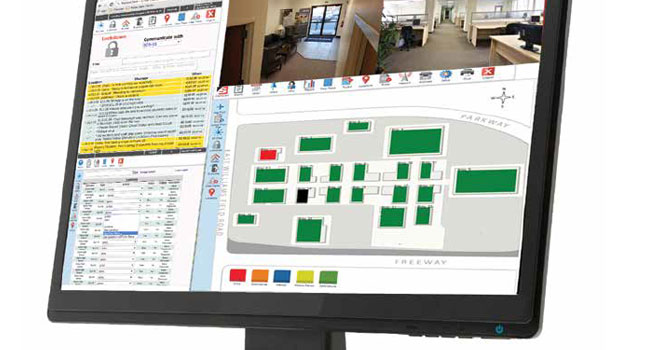
Lockdown Alert
School officials want students and staff to feel safe
- By Karen Evans
- Apr 01, 2015
All schools in North Carolina have been mandated
to successfully install and deploy a panic-
lockdown button that links to law enforcement.
Before that, Most schools had a device
which had to be pulled to send the alarm. The
Sielox Crisis Alert Status System offers schools
the ability to inconspicuously alert—and communicate—
if the need arises.
Onslow County School System in North Carolina was following a
state law that required them to install a panic-lockdown device that
would notify law enforcement when there was an emergency in any of
the schools within the district. Some of the emergencies would include
medical, missing student, a disturbance, and a quick call for help in the
event of a shooter on campus.
School officials wanted to do more than meet the mandated plans
and drills, so they looked for a solution that would work today and well
into the future.
“We want students to come to school and feel safe, and we want to
save lives should a crisis arise; that’s why we’re doing what we’re doing,”
said Dusty Rhodes, director of safety and security at Onslow County
School System.
On Aug. 6, 2014, school principals were introduced to Sielox Crisis
Alert Status System, which was being installed throughout the district.
Onslow County School officials believe they are the first in the state to
have such a system.
“Getting a handle on crisis situations in our schools is on the mind
of every student, parent, educator and law enforcement official,” said
John MacKeil, who is a regional sales manager at Sielox LLC. “Sielox
Class is secure, easy to install, and operates as a standalone or integrated
system. You simply add it to your existing network. This scalable,
flexible solution for crisis management provides real-time visibility—
when every second counts—and protects what we value most.”
When the Sielox solution was introduced, school officials were quick
to react, calling upon their integrator, North Carolina Sound in Goldsboro.
North Carolina Sound specializes in the K-12 and higher education market, and they are an engineered system dealer delivering full
integration for any system a school may need.
The Sielox Class system is perfect for the education market. In addition
to providing real-time information onsite, it also communicates
with emergency staff in any crisis response situation. The software system
provides critical situational awareness benefits to first responders
with a color-coded message alert that is sent to first responders as well
as administrators throughout the network. Law enforcement and first
responders are able to see dynamic floor plans in real-time, with accurate
updates automatically displayed on a cell phone, tablet, or patrol
car laptop.
“Sielox LLC is excited to work with our select business partner,
North Carolina Sound, to assist Onslow County Schools as they deploy
Sielox class throughout their 37 schools,” MacKeil said.
Features of the system include text and email alerts to law enforcement,
school officials, and first responders, as well as two-way chat
between classroom and responders, and interface paging and mass
notification systems using AC-1700 outputs to trigger preprogrammed
announcements and messages.
Sielox Class provides critical situational awareness that benefits first
responders with real-time states updates to aid in response and deployment.
This allows first responders to arrive at the scene with knowledge
of what is happening.
“It is automating an evacuation plan in response to a crisis situation,”
said Gary Hinton of North Caroline Sound. “The system is automating
the FEMA systems of the red/green cards. It creates a graphical
map for law enforcement to respond quickly to areas in the school
instead of walking blind and not knowing where the crisis is.”
Following the 1999 school shooting tragedy at Columbine, some
schools chose to follow the FEMA red/green procedure. In 2012, Sielox
Class was developed to expand communication and awareness during
critical situations. The Sielox system works with just the push of a button
from a teacher or administrator’s computer, smartphone, tablet, or
any device that can tap into their browser-based system, which when
deployed, puts the school into the lockdown mode. Communication
between schools officials, teachers, and law enforcement is handled
silently, and in real time. Sielox Class works efficiently with digital
system maps with a red square on a digital grid of each school, showing
where a crisis originated.
Under the old system, classroom teachers would have to place a red
or green card in the window or in the door. Teachers are then exposed.
With the new system, Rhodes said the door is locked, and they can
hide in the closet with the laptop.
“They’ve never even picked up the phone and law enforcement is on
the way,” Rhodes said.
Funded by $230,000 in grants and school
funds, the system has installed in all 37 Onslow
County Schools.
This article originally appeared in the April 2015 issue of Security Today.